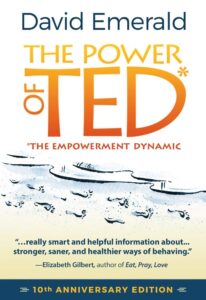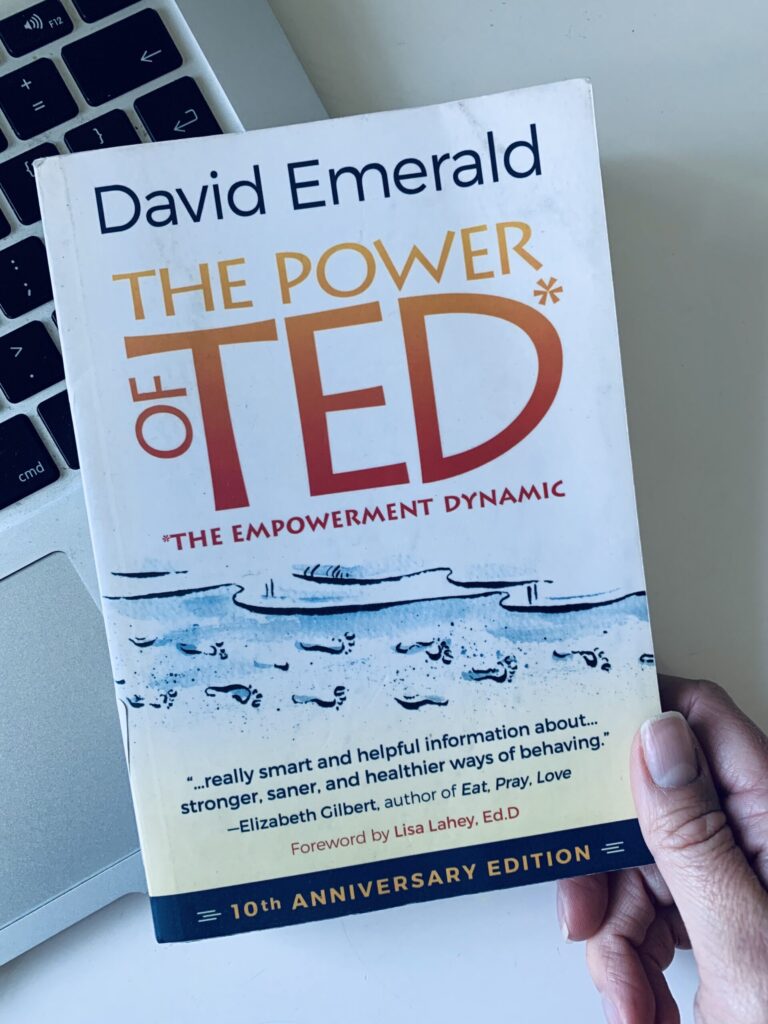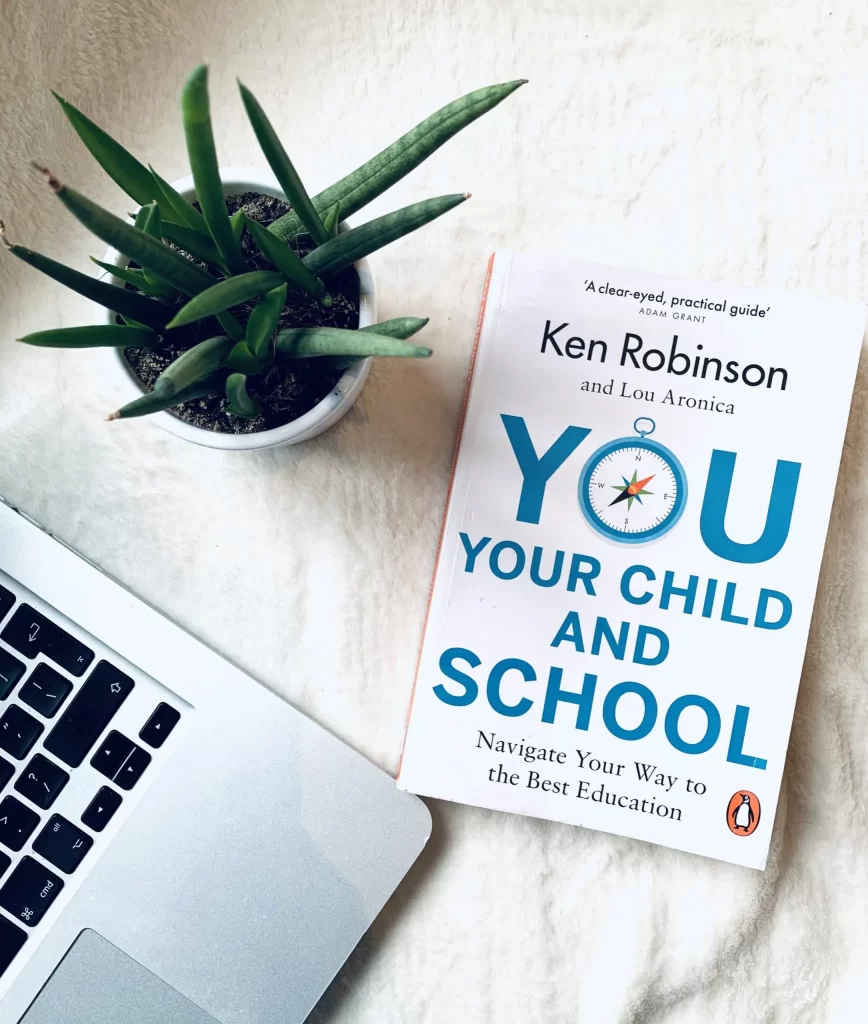 The Power of TED. Book Summary
The Power of TED. Book Summary
The Empowerment Dynamic
David Emerald
Polaris Publishing; Fourth Edition (1 Mar. 2015)
About David Emerald
With over three decades of hands-on experience, David Emerald is widely recognized as the visionary behind leadership frameworks that have significantly enhanced teamwork and productivity. A consultant, facilitator, executive coach, speaker, and author, David, along with Donna Zajonc, co-founded the Bainbridge Leadership Center. As the director of the Center’s Organizational Leadership and Self Leadership practice areas, his mission is to guide individuals, teams, and organizations towards leading and working from a vision-driven and passion-centered approach. David assists clients in fostering collaborative skills to initiate sustainable change and growth, fostering impactful partnerships along the way.
About The Book
“Your life is a kind of laboratory where you’re constantly experimenting with your own higher knowing, always increasing your capacity to design the life you choose. Human beings must create; it’s hardwired. The question is, are you consciously creating or only sleepwalking through your human life?”
When I first came across the concept of being a Creator in Phil Stutz’s book The Tools, I got curious and started digging deeper. That’s when I found this little (but powerful) book.
David Emerald’s fable, The Power of TED, is all about changing how we view life’s challenges. Instead of getting stuck in the Dreaded Drama Triangle (DDT) with the Victim mindset, Emerald introduces The Empowerment Dynamic (TED) framework. This shift helps us see ourselves as creators, not victims, and encourages us to face challenges as opportunities for growth.
At its core, Emerald’s message is about empowerment through changing our perspective. By adopting the roles of creator, challenger, and coach, we can take control of our lives and build healthier, more supportive relationships. This proactive approach moves us from reacting to problems to actively creating the life we want.
It’s a quick but powerful read that really makes you reflect. I highly recommend this book to anyone interested in self-development. If you’re a parent, this book will also give you a few ideas on instilling the Creator mindset in your child right from the beginning.
Let’s jump straight in.
Key Insights
The Dreaded Drama Triangle
“When you inhabit any of these three roles, you’re reacting to fear of victimhood, loss of control, or loss of purpose. You’re always looking outside yourself, to the people and circumstances of life, for a sense of safety, security, and sanity.”
Based on Dr. Stephen Karpman‘s 1960s Drama Triangle, the Dreaded Drama Triangle (DDT) is the toxic mess we often find ourselves entangled in.
Each point of the DDT represents roles that describe attitudes associated with others: Victim, Persecutor, and Rescuer.
Here is a quick look at them.
The Victim
“The central figure in the DDT, a Victim is one who feels powerless and has experienced some loss, thwarted desire or aspiration, and/or the psychic death of a dream. An important distinction is made between victimhood, which is a situation in which one is victimized to some degree, and Victimhood, which is a self-identity and “poor me” life stance.”
That’s the Victim in its essence. Emerald also adds:
“Victims may be defensive, submissive, over-accommodating to others, passive-aggressive in conflict, dependent on others for self-worth, overly sensitive, even manipulative. They’re often angry, resentful, and envious, feeling unworthy or ashamed about their circumstances. Have you ever felt or acted this way?”
Well…have you? That’s the time when you got stuck in the Victim orientation:
“Frozen in fear, you avoid responsibility because you think your experience is beyond your control. This stance keeps you from making decisions, solving problems, or going after what you want in life.”
Not a very helpful mindset, as you can guess.
The Persecutor
“The Persecutor serves as the cause of the Victim’s perceived powerlessness, reinforcing the Victim’s “Poor Me” identity. The Persecutor may be a person, condition (such as a health condition), or a circumstance (a natural disaster, for example). When the Persecutor is a person, he or she is symbiotically linked to the Victim and seeks to dominate (either overtly or covertly) and maintain a “one-up” position through a variety of assertive and/or manipulative means. Often a Persecutor’s behavior is driven by his own fear of becoming, or re-becoming, a Victim. Fear of losing control can also be a factor.”
Now, in the DDT, every Victim needs a Persecutor. They’re like two sides of the same dysfunctional coin and can’t exist without each other. Here’s how Emerald explains it:
“These people are often authoritarian and rigid in their views, exerting power over others in an effort to keep others from having power over them. Persecutors may act grandiose and self- righteous to mask their own insecurity.”
Question for you – have you ever embodied the Persecutor role in your life?
The Rescuer
“The Rescuer is any person or activity (such as an addiction) that serves to help a Victim relieve the “pain” of Victimhood. As an activity, the Rescuer helps the Victim “numb out.” Despite having helpful intentions, the Rescuer as a person reinforces the Victim’s “Poor Me” by adopting a “Poor You” attitude, which serves to increase the Victim’s sense of powerlessness. This renders the Victim dependent upon the Rescuer for a sense of safety—a bond forged by the Victim’s shame for needing to be rescued and cemented by the Rescuer’s own fear of abandonment or loss of purpose.“
That’s the Rescuer role in a nutshell. Emerald highlights how many Victims turn to Rescuers, such as alcohol, drugs, sex, or workaholism, to numb out negative feelings.
He also points out that Rescuers often seem like the good guys, but their actions often stem from underlying fears:
“Persecutors fear loss of control. Rescuers fear loss of purpose. Rescuers need Victims—someone to protect or fix—to bolster their self-esteem.”
Can you recall a time when you’ve taken on this role? Perhaps as a parent?
TED – The Antidote To The Dreaded Drama Triangle
“TED—The Empowerment Dynamic—counteracts the poison of DDT, the Dreaded Drama Triangle. TED is the antidote for DDT.”
Now, the antidote to the Victim Orientation is the Creator Orientation, which lays the foundation for The Empowerment Dynamic (TED) triangle. Shifting from the Victim Orientation to the Creator Orientation opens up a whole new set of roles and relationship dynamics. TED consists of three roles, each serving as an antidote to the toxic roles of the DDT: Creator, Challenger, and Coach.
Here’s a quick overview of each role.
The Creator
“This is the central role of TED* and is the antidote to the powerless Victim. A Creator cultivates his capacity to create outcomes by adopting a Creator Orientation and harnessing Dynamic Tension. A Creator greatly increases his ability to choose a response to life circumstances (even in the harshest of situations), rather than merely reacting to them. Creators seek and form relationships with other Creators (Co-Creators), both to support and to be supported through the other two roles that make up TED.”
Guess what the main difference is between the Victim Orientation and the Creator Orientation? It all comes down to where they direct their attention:
“For Victims, the focus is always on what they don’t want: the problems that seem constantly to multiply in their lives. They don’t want the person, condition, or circumstance they consider their Persecutor, and they don’t want the fear that leads to fight, flee or freeze reactions, either. Creators, on the other hand, place their focus on what they do want. Doing this, Creators still face and solve problems in the course of creating outcomes they want, but their focus remains fixed on their ultimate vision.”
So simple, yet so powerful. Creators take charge by actively choosing their response to challenges. They focus on their vision and the outcome they want to achieve rather than just the problems. Then, they channel their energy into creating what they most deeply want to experience in life.
P.S.: This reminds me of Victor Frankl, the ultimate icon of the Creator mentality. In Man’s Search for Meaning, he famously said:
“Everything can be taken from a man but one thing: the last of the human freedoms—to choose one’s attitude in any given set of circumstances, to choose one’s own way.”
No matter what life throws your way, approaching it with a Creator mindset will only make you stronger.
The Challenger
“Serving as an antidote to a Persecutor, who provokes a reaction from a Victim, a Challenger is a catalyst for change, learning, and growth for a Creator. A Challenger may be conscious and constructive, especially when in relationship with another Creator. Some of the Challengers we meet in life are unconscious – a person, condition, or circumstance that comes into our experience uninvited. In either case, a Creator is able to embrace the experience of a Challenger as a call to action, learning, and growth.”
This role hinges on how we perceive challenges in our lives. Do we view them as breaking us (Victim Orientation) or helping us grow (Creator Orientation)?
Powerful stuff. It brings to mind the Growth Mindset approach to challenges and failures.
The Coach
“As the antidote to a Rescuer, who reinforces the powerlessness of a Victim, a Coach views others as being creative and resourceful. A Coach sees each person he relates to as a Creator in her own right, and seeks to support her in the process of creating outcomes. A Coach does this by asking questions that help clarify envisioned outcomes, current realities, and possible Baby Steps. A Coach dares a Creator to dream and discern the pathways for manifesting her visions.”
That sums it up nicely. Every parent’s aim should be to embody the Coach role to nurture true Creators.
Now, let’s delve into the practical aspects of shifting roles and moving away from the DDT towards the TED framework.
Three Things That Make a Difference
“AIR: This acronym highlights the three key differences between the Victim and the Creator Orientation. The first is where you place your Attention (on what’s wanted instead of what’s not wanted). The second is what you hold as your Intention (manifesting outcomes, not just ridding yourself of problems). The third is Results (satisfying and sustainable, not temporary and reactive). The acronym AIR also serves to reinforce the reality that a very different experience and environment (hence, “air”) is generated by each of the two orientations.”
Absolutely love this framework! If you’re aiming to make changes in your life, it’s all about directing your attention towards what you want, manifesting outcomes (tools like the WOOP framework can be incredibly helpful), and maintaining focus on achieving sustainable results.
Harnessing Dynamic Tension
“Based on the work of Robert Fritz (The Path of Least Resistance), Dynamic Tension is a way of planning for and taking action in creating outcomes. We begin by identifying and describing the vision/ outcome we desire to create. The next step is to carefully and completely assess our current reality as it relates to the envisioned outcome. There are two aspects of the current situation that we identify. The first aspects are those things that are happening or exist that support and are helpful in the creation of the outcome. The second aspects are the problems, obstacles, or things that are missing that inhibit our capacity to manifest the vision. By focusing on both the outcome and the current reality, we engage the tension—a creative force —between what we want and where we are. This tension seeks to be resolved. A Creator resolves the tension by taking Baby Steps to move from current reality toward the desired outcome. Each small step brings learning-whether it results in a step “back,” a step “forward,” or a “quantum leap”—in the process of creating outcomes.”
Here’s a straightforward way to grasp the concept of Dynamic Tension: grab a rubber band and loop it around the index and middle fingers on each of your hands. Then, stretch the rubber band by pulling your fingers apart.
Now, picture your right hand as your vision and your left hand as your current reality. Feel the tension? That’s it.
The tension between your fingers mirrors the tension that arises when you dare to dream and envision your ideal life. This tension, known as Dynamic Tension in TED terms, emerges between our ideal and our current reality.
Now, there are two ways to resolve this tension: you can release your vision and revert to your current reality, or you can move from your current situation toward your vision.
When operating from the Victim orientation, we compromise our ideal vision and then complain that someone is persecuting us.
But in the Creator orientation, we understand: “It’s impossible to invest your soul in a compromise.”
So, we embrace that tension and take what TED calls “Baby Steps” toward our goal. These are those tiny, consistent actions (aka atomic habits) that eventually lead to significant results.
The Shift
“Making “shift happen” from the Victim to the Creator Orientation and from the DDT roles to their antidotes in TED* is the pathway for transforming how we experience life and interact in relationships. The shift from Victim to Creator takes place by focusing on what we want rather than what we don’t want, by moving from reacting to choosing outcomes and our responses to life experiences, and by reconnecting to our dreams and desires. Transforming our relationship with Persecutors so that we see them as Challengers instead calls upon us to discern the learning and growth they spark. To become a conscious Challenger in relationship with others requires clarity of intention, the ability to see the other as a Creator in his own right, and the wish to provoke and evoke growth and development. The shift from Rescuer to Coach invites us to see the other as creative and resourceful, and to support him in the creation process by asking questions and facilitating his own clarification of envisioned outcomes, the current realities he faces, and possible Baby Steps for moving forward.”
When you find yourself stuck in the Victim Orientation, one of the key questions to ask is, “What do I want?” Once you have the answer, you can start taking baby steps toward your vision or solution (Creator Orientation).
For instance, if you’re feeling trapped in the victim orientation with thoughts like, “I hate my job, and my boss is really mean to me,” dwelling on these problems will only breed anxiety, misery, resentment, and hopelessness. Instead, shifting focus to a solution-oriented mindset by asking, “What do I want?” may lead you to pursue a vision like, “a more challenging and creative job in a team led by an inspirational leader, where I can contribute my experience and ideas.”
To shift from the Persecutor to the Challenger role, ask yourself, “What is my intention?” Are you seeking to prove that you’re right and exert power (Persecutor), or do you aim to challenge the other person to learn and grow as a Creator?
And finally, when you’re caught in the Rescuer mode, you doubt others’ ability to thrive without your intervention, a common scenario in helicopter parenting. To adopt the Coach role, start viewing everyone (especially your kids) as Creators fully capable of solving their own problems. Pose the empowering question, “What do YOU want?” and then offer support as they navigate toward their vision.
Action Steps For You
- Reflect on situations where you might fall into the Victim, Persecutor, or Rescuer roles. Recognizing these patterns in your life is the first step towards shifting to the Creator, Challenger, or Coach roles.
- Take time to envision your ideal outcomes in various areas of your life – career, relationships, personal growth, etc. Use the Dynamic Tension concept from the book to bridge the gap between your current reality and your envisioned outcomes. Break down your vision into actionable steps and commit to taking consistent “Baby Steps” towards them.
- Make a list of people, conditions, or circumstances you have thought of as Persecutors. For each one of them, list at least seven ways they have been a gift or a teacher to you. Think of how they have challenged you to learn and grow.
Quotes From the Book
-
“At the core of any Victim, you’ll find the psychic death of a dream.”
-
“The focus in the Creator Orientation is on a Vision or an Outcome. You orient your thoughts and actions toward creating what you most deeply want to see or experience in life.”
-
“A Creator is vision-focused and passion-motivated. To really live into your Creator self, you are called to do the inner work necessary to find your own sense of purpose—whatever touches your heart and holds meaning for you.”
-
“Living from the Creator Orientation is actually more challenging. In the Victim Orientation, I didn’t have to exercise conscious choice; I just reacted to my circumstances.”
-
“When problems and obstacles arise – and they always do – they’re part of the creating process. Welcome them as teachers that are challenging you to grow.”
-
“Some of the steps you take may end up being detours or out-and-out mistakes. By staying focused on your vision, though, you’ll find even those steps useful in the creating process.”



